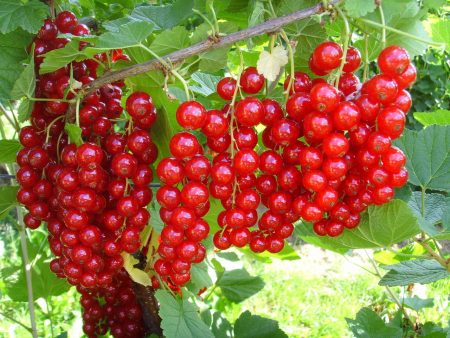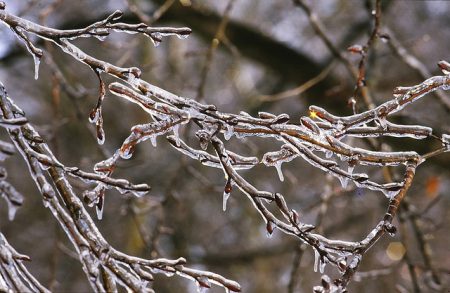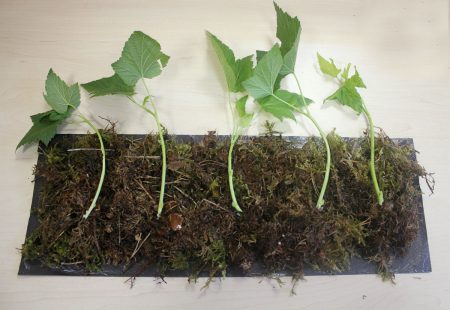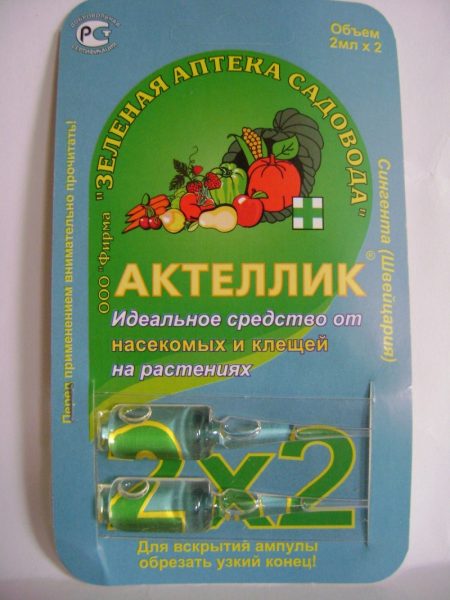Characteristics of Sugar currant
- Advantages and disadvantages of the variety.
- Features of agricultural technology.
- What causes the disease and how to treat it.
- Reviews from gardeners.
The Sakharnaya red currant variety was developed in the USSR in the late 70s. Its author is breeder N.K. Smolyaninova. Currants are intended for cultivation in central Russia; they can be grown in the North-West.
Characteristics of the Sugar variety
Sugar currant of early ripening, dessert purpose. The bushes are upright, compressed, 1.5-2 m high. The lower part of the bush becomes bare over time. The bush produces a lot of root shoots. Fruit clusters are long and can contain up to 15 berries. The berries are bright red and do not fall off for a long time. The fruits are medium and small, the taste is sweet and sour, pleasant. Dessert variety. The berries are suitable for fresh consumption, freezing and processing.
- berry weight 0.4-0.6 g;
- yield 5-6 kg/bush;
- high vitamin C content.
Sugar currant is extremely durable. It can produce good harvests for up to 25 years.
Advantages. A high-yielding variety with a pleasant taste without excess acid. Very winter-hardy and frost-resistant. It does not freeze in harsh winters and tolerates sudden temperature changes. Highly transportable, the berries retain their shape well when transported over long distances. Undemanding in care. Sugar is very resistant to pests and diseases.
Flaws. The berries are not large; over time, the fruit may become shredded. Low self-fertility - only 25-35%.
Features of agricultural technology
Sugar currant is very unpretentious. The variety was bred for cultivation in the middle zone with its non-chernozem soils and variable climate. Therefore, it grows on any soil. Red currants tolerate a large amount of organic matter in the soil better than black currants, so they grow quite well on black soils. If the soil is too poor, then scatter a bucket of rotted manure around the perimeter of the bush, embedding it into the soil.
The variety grows well in sunny areas and in the shade of young trees. In dense shade, currants will also grow, but they will not produce a harvest.
Landing
The best planting time is early autumn, early to mid-September. If planted later, the bushes will not have time to take root and will go into the winter poorly prepared. Sugar, even if poorly rooted, will not freeze in winter, but in spring its growth will slow down, some of the shoots will have to be greatly shortened, which will affect the entry of fruiting into fruit. The most favorable time for planting is a month before the onset of cold weather.
The root system of red currant is quite strong, its sucking roots are located at a considerable depth, so planting holes are made at least 60 cm deep. They are filled with organic matter (1 bucket), add 1 tbsp. l. potassium sulfate, if the soil is very acidic, add lime fertilizer. Instead, you can add a liter jar of ash. You should not use fertilizers containing chlorine, as currants do not tolerate them well, and chlorine burn of the leaves may even develop.
The finished pit is filled to a depth of 30 cm and watered well. The seedlings are planted obliquely, burying the 3 lower buds into the ground. The shoots are shortened, leaving only 3 buds above the ground. The planted bushes are well watered.
In the first 2 years, red currants grow rather slowly, since at this time the root system is fully formed.
Variety care
After planting pruning, it is impossible to shorten the shoots of red currants, since the harvest is formed at the ends of last year's growths. If you cut off the top of the shoot, there will be no harvest.
If fruits do not form on the branches, or there are few of them and they are weak, then such a branch is cut to the base, since it is unproductive.
The Sugar variety blooms early, the berries have time to set and even grow a little. Therefore, it is not afraid of late spring frosts.By the end of May, the ovaries can tolerate matinees down to -7°C. Due to the high resistance of the ovaries to frost, the variety produces stable, high annual yields.
Sugar produces a lot of basal shoots, so every year in the fall they are cut out, leaving 2-3 of the most powerful ones. By the age of 4, the varietal bush should have 23-25 healthy skeletal branches.
The variety is very drought-resistant and does not require additional watering. The exception is June, when fruiting occurs. If the weather is dry and hot, and there has been no rain for more than 15 days, then Sugar should be watered abundantly. Each bush requires 3-5 buckets of water. There is no need to be afraid to flood the bush. Since its roots are deep, it is necessary that a sufficient amount of water reaches them.
During dry autumn, water-recharging irrigation is carried out by pouring 5-6 buckets of water under each bush.
Since the variety has low self-fertility, for better berry set it is necessary to plant pollinating varieties. The best varieties are Serpentine, Viksne, Shchedraya. White-fruited varieties are also suitable as pollinators.
Top dressing
Red currants are potassium lovers, so after fruiting they need increased doses of this element. After harvesting, humus, compost or completely rotted manure are scattered around the perimeter of the bushes. If there is no organic matter, then add complex fertilizer. Additionally, add 1 tbsp. l. potassium sulfate. If the weather is damp, then mineral fertilizers are applied in dry form, embedding them into the soil to a depth of 3-4 cm.
Since the berries carry a lot of nutrients, Sugar must be fed with microfertilizers.Usually, after harvesting, the bush is sprayed with Uniflor micro, Oracle, Agricola fertilizer for berry crops or any other microfertilizer for berry fields. In rainy weather, water with the same fertilizer.
If the soil is acidic, then after harvesting the bushes are watered with lime milk. Instead, you can pour ash extract over them or add dry ash.
Reproduction
The variety is best propagated by green cuttings and arched layering. If you propagate Sugar by woody cuttings, then they should be cut 2-3 weeks earlier than is usually done with black currants. Woody redcurrant cuttings take root much more difficult, and if cutting is done late, the percentage of rooting can be very low.
Diseases and pests
The variety is very resistant to diseases. It is not affected by terry, powdery mildew, or rust. In damp and warm summers, anthracnose may appear. If 1/3 of all leaves are affected, then Sugar completely discards them. This greatly reduces its winter hardiness, and although it will not freeze, the young growth may freeze.
At the first signs of the disease, biological preparations Fitosporin, Gamair, Alirin B are used. Since fruit ripening occurs at this time, chemical fungicides cannot be used.
Among the pests, serious damage to the variety is caused by the gooseberry moth, shoot aphid and red gall aphid.
When a moth appears, treatment is carried out with the biological preparation Fitoverm. If there are a lot of pests, then immediately after flowering the bushes are treated with Iskra, Actellik and other broad-spectrum insecticides.
The bushes are sprayed against aphids several times a season with a solution of soda ash or regular soda. Treatment should be carried out on the underside of the leaf, since aphids live and feed there.
Caring for the Sugar variety is very simple and easy. As a reward for her efforts, she will please the gardener with high productivity.
Reviews from gardeners about Sugar currants
Almost all reviews about Sugar currants are extremely positive. All gardeners note the unpretentiousness of the variety, good frost resistance, wonderful taste and long fruiting time of this variety.
Probably the only drawback of Sugar is its lack of self-fertility. To get good annual harvests, you need to plant pollinating varieties nearby.
Review of Sugar currants from the Tambov region:
One of my favorite varieties of red currant. The yield is excellent, it is easy and unpretentious to care for, practically does not suffer from anything, winters well, and has a simply wonderful sweet and sour taste. Well, what more could you ask for?
Review from the Ryazan region:
Red currant variety Sugar selection N.K. Smolyaninova has not yet lost its significance. The variety is productive, medium-sized berries 0.7 - 1 g, good cluster. True, it does not live up to its name; the berries are sweet and sour.
Review of Sakharnaya from Samara:
A very early ripening variety. Flowering early. A variety for those with a sweet tooth. The plant is slightly affected by pests and diseases and bears fruit abundantly every season. The brush is long, almost as long as the palm of your hand (up to 9 cm). The berries stick well to the bushes, are intensely red, and have an excellent dessert taste. Purpose: dining. A highly winter-hardy variety that tolerates winters with sudden temperature changes. Productivity is average (4 kg per bush)






 CUCUMBERS NEVER GET SICK, I'VE BEEN USING ONLY THIS FOR 40 YEARS! I SHARE A SECRET WITH YOU, CUCUMBERS ARE LIKE THE PICTURE!
CUCUMBERS NEVER GET SICK, I'VE BEEN USING ONLY THIS FOR 40 YEARS! I SHARE A SECRET WITH YOU, CUCUMBERS ARE LIKE THE PICTURE! You can dig a bucket of potatoes from each bush. Do you think these are fairy tales? Watch the video
You can dig a bucket of potatoes from each bush. Do you think these are fairy tales? Watch the video
 How our fellow gardeners work in Korea. There is a lot to learn and just fun to watch.
How our fellow gardeners work in Korea. There is a lot to learn and just fun to watch. Eye trainer. The author claims that with daily viewing, vision is restored. They don't charge money for views.
Eye trainer. The author claims that with daily viewing, vision is restored. They don't charge money for views. A 3-ingredient cake recipe in 30 minutes is better than Napoleon. Simple and very tasty.
A 3-ingredient cake recipe in 30 minutes is better than Napoleon. Simple and very tasty. Therapeutic exercises for cervical osteochondrosis. A complete set of exercises.
Therapeutic exercises for cervical osteochondrosis. A complete set of exercises. Which indoor plants match your zodiac sign?
Which indoor plants match your zodiac sign? What about them? Excursion to German dachas.
What about them? Excursion to German dachas.